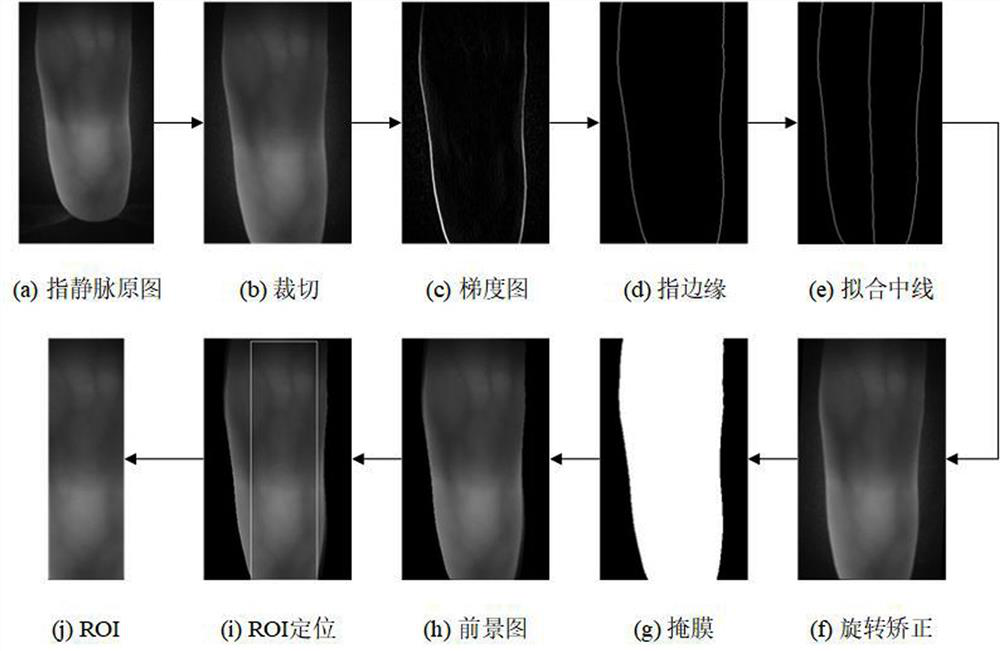Finger vein recognition method based on residual attention mechanism
A recognition method, finger vein technology, applied in neural learning methods, character and pattern recognition, computer parts and other directions, can solve the complex extraction process, high image quality requirements, model design image data volume does not match model parameters, etc. problems, to achieve the effect of accelerating network training, improving accuracy, and enhancing feature extraction and representation capabilities
- Summary
- Abstract
- Description
- Claims
- Application Information
AI Technical Summary
Problems solved by technology
Method used
Image
Examples
Embodiment 1
[0034] The data set used in this example is FV-USM, which was created by the Bakhtiar team of University Sains Malaysia. The data set contains a total of 492 fingers of different types, and each finger is divided into two stages to collect 6 images. The original image size is 640×480, and the “jpg” format is as follows: figure 1 shown.
[0035] This embodiment proposes a finger vein recognition method based on a residual attention mechanism, including the following method steps:
[0036] Training a Finger Vein Image Classification Network Based on Residual Attention Mechanism
[0037] S1, for example image 3 The original finger vein image shown in (a) performs edge detection, determines the upper and lower edges of the finger, and obtains a finger edge line with a single pixel width;
[0038] The specific acquisition process of the single-pixel-wide finger edge line is as follows:
[0039] S11, such as image 3 As shown in (b), the Gaussian filter is used to denoise the ...
Embodiment 2
[0075] Based on the same inventive concept as the method described in Embodiment 1, this embodiment proposes a system based on the finger vein recognition method based on the residual attention mechanism, which includes:
[0076] Model training module for training finger vein image classification network based on residual attention mechanism
[0077] The finger vein recognition module is used to input the obtained original finger vein image into the trained finger vein image classification network based on the residual attention mechanism, and then output the recognition result.
Embodiment 3
[0079] Based on the same inventive concept as the method described in Embodiment 1, this embodiment proposes a terminal, including a processor, a memory, and a program of a finger vein recognition method based on a residual attention mechanism stored in the memory. When the program of the finger vein recognition method based on the residual attention mechanism is run by the processor, the steps of the finger vein recognition method based on the residual attention mechanism as described in Embodiment 1 are realized.
PUM
 Login to View More
Login to View More Abstract
Description
Claims
Application Information
 Login to View More
Login to View More - R&D
- Intellectual Property
- Life Sciences
- Materials
- Tech Scout
- Unparalleled Data Quality
- Higher Quality Content
- 60% Fewer Hallucinations
Browse by: Latest US Patents, China's latest patents, Technical Efficacy Thesaurus, Application Domain, Technology Topic, Popular Technical Reports.
© 2025 PatSnap. All rights reserved.Legal|Privacy policy|Modern Slavery Act Transparency Statement|Sitemap|About US| Contact US: help@patsnap.com



